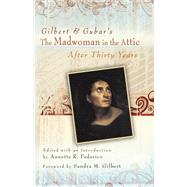Gilbert & Gubar's the Madwoman in the Attic After Thirty Years
, by Federico, Annette R.; Gilbert, Sandra M.- ISBN: 9780826219275 | 0826219276
- Cover: Paperback
- Copyright: 1/25/2011
When it was published in 1979, Sandra M. Gilbert and Susan Gubar'sThe Madwoman in the Attic: The Woman Writer and the Nineteenth-Century Literary Imaginationwas hailed as a pathbreaking work of criticism, changing the way future scholars would read Jane Austen, Mary Shelley, the Bronteuml;s, George Eliot, and Emily Dickinson. This thirtieth-anniversary collection adds both valuable reassessments and new readings and analyses inspired by Gilbert and Gubarrs"s approach. It includes work by established and up-and-coming scholars, as well as retrospective accounts of the ways in whichThe Madwoman in the Attichas influenced teaching, feminist activism, and the lives of women in academia. These contributions represent both the diversity of todayrs"s feminist criticism and the tremendous expansion of the nineteenth-century canon. The authors take as their subjects specific nineteenth- and twentieth-century women writers, the state of feminist theory and pedagogy, genre studies, film, race, and postcolonialism, with approaches ranging from ecofeminism to psychoanalysis. And although each essay opensMadwomanto a different page, all provocatively circle back-with admiration and respect, objections and challenges, questions and arguments-to Gilbert and Gubar's groundbreaking work. The essays are as diverse as they are provocative. Susan Fraiman describes howMadwomanopened the canon, politicized critical practice, and challenged compulsory heterosexuality, while Marlene Tromp tells how it elegantly embodied many concerns central to second-wave feminism. Other chapters considerMadwomanrs"s impact on Milton studies, on cinematic adaptations ofWuthering Heights, and on reassessments of Ann Radcliffe as one of the bookrs"s suppressed foremothers. In the thirty years since its publication,The Madwoman in the Attichas potently informed literary criticism of womenrs"s writing: its strategic analyses of canonical works and its insights into the interconnections between social environment and human creativity have been absorbed by contemporary critical practices. These essays constitute substantive interventions into established debates and ongoing questions among scholars concerned with defining third-wave feminism, showing that, as a feminist symbol, the raging madwoman still has the power to disrupt conventional ideas about gender, myth, sexuality, and the literary imagination.







